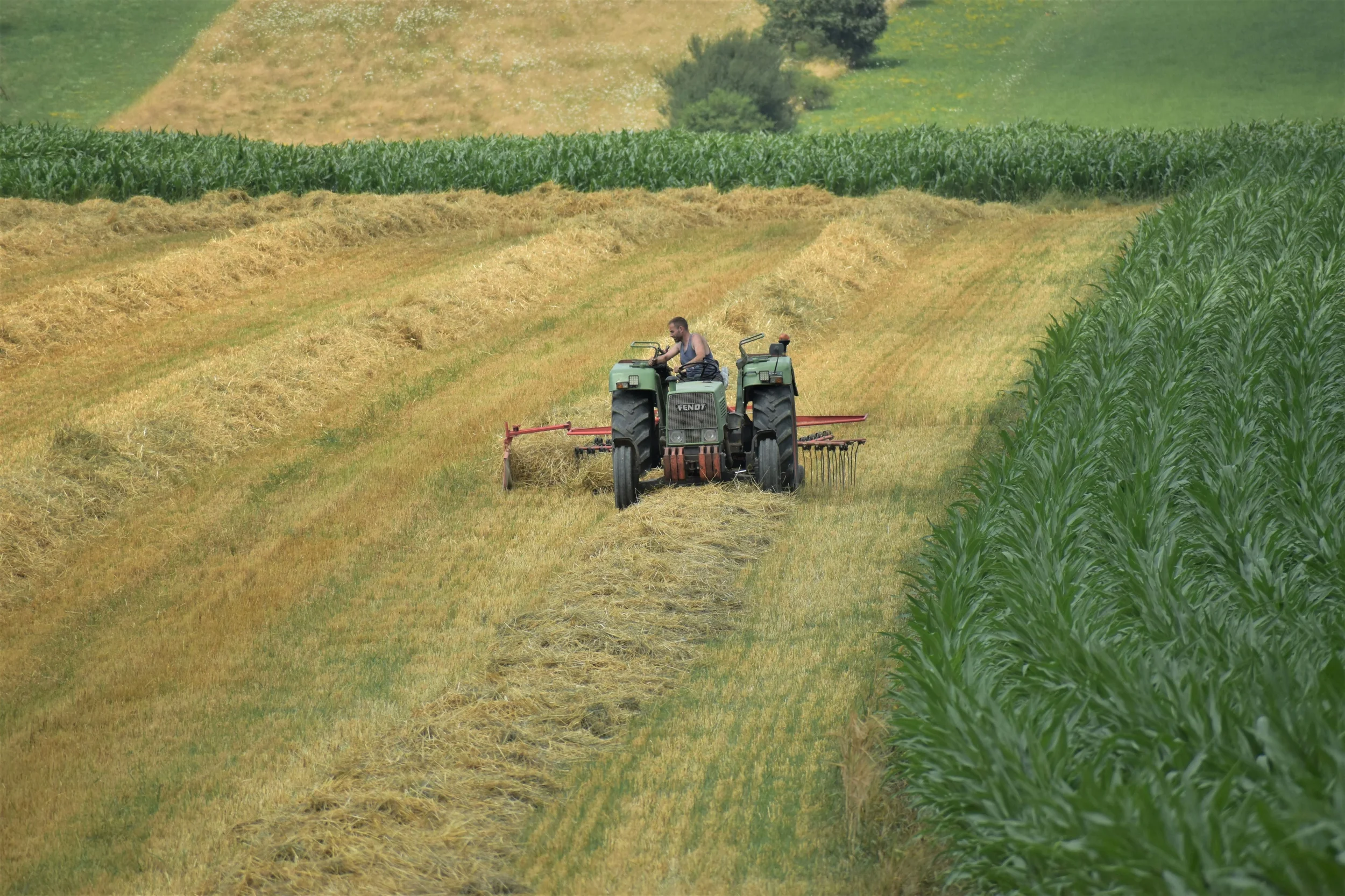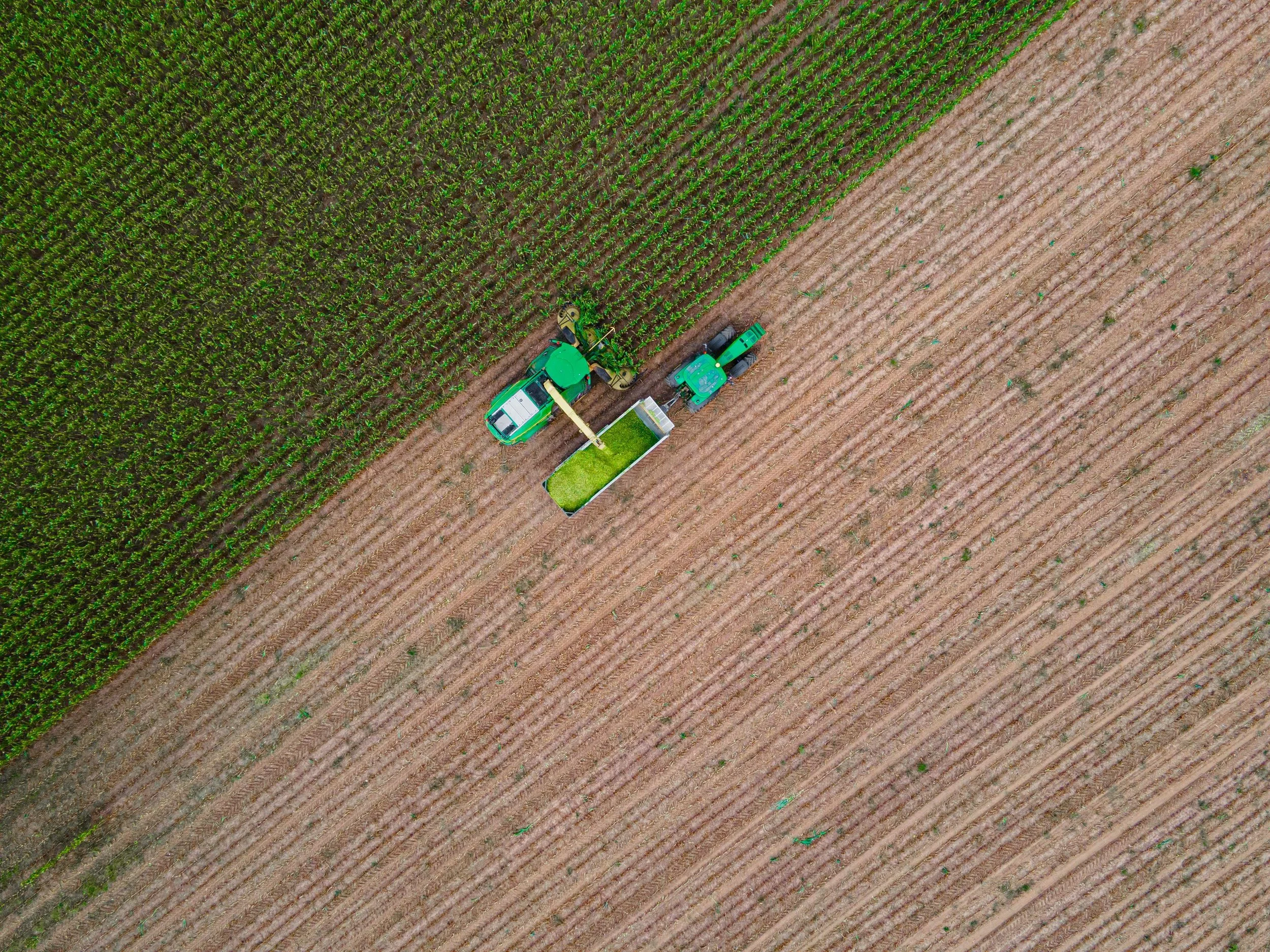Land Core Newsletter - November 2025
Image from Unsplash+
Dear friends and colleagues,
Last week, the government finally ended a history-making 43-day shutdown, allowing USDA and other government agencies to resume providing critical services to American farmers and ranchers. While economically distressed farmers still face a rocky path to recovery, the funding package provides a full year of Agriculture and FDA funding, and a one-year extension of the 2018 Farm Bill, in lieu of the long-overdue five-year farm bill.
With all this and more unfolding, we must remember that the work of building healthy soil and a resilient food system cannot pause amidst political uncertainty.
Read on for more detailed policy updates on the shutdown's aftermath, insights into the MAHA movement's first year, job opportunities on our team, and what we've been reading.
As always, we remain motivated by soil health's unifying power in these moments of transition and instability.
Warmly,
The Land Core Team
Give to Grow Soil Health Progress
The common good in working to ensure we have healthy soil to grow clean, nutrient-rich food in America is more certain and important now than ever before. Land Core is the only organization exclusively focused on advancing federal policy and financial incentives in insurance and investment for soil health. We work to bridge political divides and meet farmers where they’re at.
If you can, please give a few dollars today, or consider signing up for a monthly donation. Even a small amount makes a huge difference in allowing us to continue this work. Donate to Land Core! 🌱
As you plan for Giving Tuesday, think of Land Core! Healthy soil sustains thriving farms, resilient farmers, and productive land. Every dollar strengthens our work; pitch in today and keep the momentum going.
Policy Updates
Image from Unsplash+
Government Shutdown & Ag Funding Updates
After 43 days, the federal government shutdown is finally over. Last week, Congress passed a funding deal that includes long-term support for veterans programs, food aid, and, as mentioned in our intro letter, farmer assistance. The resolution allocated funding for these programs through September 30, 2026; however, the majority (around 90%) of funding for government operations was only authorized through January 30, 2026. So, although agriculture programs may have a little runway, major questions remain about other program funding, and the possibility of yet another government shutdown being just around the corner.
So, what’s included in the funding package?
It provides year-long funding for some agriculture programs, including food aid (SNAP) and farmer assistance.
Unfortunately, there were also cuts to a few programs essential to farmers building soil health on their operations, including Conservation Technical Assistance, the Grazing Lands Conservation Initiative, and the Local Agriculture Marketing Program.
The bill also eliminates caps for NRCS conservation programs, including EQIP and CSP. In the past, these programs had per-farm payment caps to distribute funding across operations; now, applicants can receive unlimited conservation funding, which may lead to a concentration of resources among fewer, bigger players rather than a broader distribution of support for small and mid-sized farms - especially with USDA already strapped by earlier cuts to the number of employees available to process payments.
Provisions included in the funding package could make it harder for USDA to continue cutting staff/offices from the agency. The bill designates $15+ million for hiring new FSA employees to fill vacancies at county offices and farm loan positions (many filling positions that were cut earlier this year). Additionally, the bill requires the USDA Secretary to obtain Congressional approval before removing programs, relocating offices/employees, and otherwise reorganizing USDA operations. This reversal of the administration's prior plans to close dozens of field offices and relocate 2,500+ employees helps protect conservation programs and technical assistance services that farmers depend on for implementing soil health practices.
The bill also includes a replenishment of the Commodity Credit Corporation Fund, which can hold up to $30 billion, that the president may leverage for upcoming farm aid in response to unstable soybean markets and tariff impacts. Farm and conservation groups are already strategizing about how to ensure any relief payments are well distributed among smaller producers, in addition to the biggest operations.
What does this mean for the Farm Bill?
The funding package includes money for vital programs, including research and mandatory livestock price reporting (whose funding was otherwise going to expire at the end of the year), among others. The inclusion of these programs has reaffirmed what many industry and stakeholders have expected for months: even a “skinny” farm bill is unlikely to pass this year. Again, the One Big Beautiful Bill Act of Summer 2025 included funding packages for many agriculture programs, but left a few critical ones for extension or renegotiation before the end of the year. Now, with many of those leftover programs included in the funding package, it’s likely that farm bill negotiations will be pushed to 2026.
Rooted in Health
Image from Unsplash+
As we’ve written about previously, soil health is inextricably connected to the health of our food and, in turn, the health of our bodies. While leaders in regenerative agriculture have been working to demonstrate the increased nutrient density of products grown with soil health-focused practices, this work has undeniably gained political momentum with the rise of the “MAHA” movement. Here we reflect on where the movement stands after its first year.
Last Week’s MAHA Summit
The first-ever Make America Healthy Again (MAHA) Summit was held in Washington, D.C. on Wednesday, November 12, underscoring the cachet of the movement. Although the event was closed to reporters, several media outlets reported on notable attendees, including prominent government officials such as HHS Secretary Robert F. Kennedy Jr., Vice President JD Vance, and NIH Director Jay Bhattacharya, in addition to top industry executives from companies including Walmart, Google, and Neuralink. The event focused heavily on leveraging technology to advance the movement’s goals of transforming food systems across the country.
Doubt Within the Movement?
The initial momentum of the MAHA movement was historic. Mothers, teachers, and Americans across generations felt recognized and validated, their health concerns finally heard and centered. Who would oppose goals like feeding children healthy food, reducing chemicals and additives, and creating a more transparent food system? Now, over a year in, is the movement losing steam or gaining strength?
It has been widely noted that many of RFK Jr.'s foundational promises have been watered down or abandoned. His commitment to giving farmers "an off-ramp from the current system that destroys their health, wrecks the soil, makes Americans sick and destroys family farms" and celebrating how regenerative farmers "literally green deserts” and “rebuild depleted soils" is a stark contrast to weakened environment regulations, cut USDA conservation programs, and reductions to initiatives that supply fresh, local produce to schools and food banks. The gap between the movement’s regenerative agriculture rhetoric and actual policy impacts is beginning to trouble supporters. Land Core will continue monitoring whether the current administration’s commitments to soil health and regenerative land management evolve into meaningful policy.
We’re Hiring: Policy Manager
Land Core is continuing our search for a talented, pragmatic, and dedicated Policy Manager as we build additional capacity for our policy priorities, government affairs, and educational initiatives. This role will lead outreach to relevant agencies and Congressional offices, help build coalition support for soil health-focused initiatives, and expand Land Core’s capacity to leverage current and emerging legislative and agency opportunities to strengthen soil health.
Please note that this full-time role requires frequent in-person meetings with partners and policymakers in Washington, D.C., in addition to remote work. More details here.
We are actively reviewing strong candidates and welcome additional referrals from our network.
Educational Resources & Opportunities
Educational Cut of Soil Health Film
The award-winning documentary "Common Ground" is now available as "Common Ground Redux," a free educational edition featuring farmers, ranchers, and advocates sharing real-world stories about restoring land through regenerative agriculture practices. Following the success of "Kiss the Ground" (shown in 60,000+ schools worldwide), "Common Ground Redux" offers accessible, solutions-focused soil health education. Complete a brief form to view the film/host a screening and check out additional resources here.
Quivira Coalition’s New Agrarian Apprenticeships
The Quivira Coalition's New Agrarian Program is accepting applications through December 15 (or until all positions are filled) for 8-month paid apprenticeships on regenerative ranches and farms across the Intermountain West, beginning March/April 2026. The program offers housing, travel reimbursements, education stipends, monthly webinars, and complimentary conference attendance. Learn more here, and share with any young farmers you know!
Upcoming Events
Image from Unsplash+
November 19-20, 2025 – Sustainable Agriculture Summit (Anaheim, CA)
This summit will convene farmers, suppliers, processors, brands, academia, conservation organizations, and the public sector to discuss the food and agriculture value chain and reimagine a shared vision for a sustainable and resilient U.S. food system. Register for the Summit here (discounts available for government stakeholders, farmers, and students).
December 15-19, 2025 – American Geophysical Union (AGU25) Annual Meeting (New Orleans, LA)
Join thousands of scientists, educators, and policymakers at the premier earth and space science conference to explore groundbreaking research, connect with global experts, and discover cutting-edge solutions for our planet's future. Register here.
What We're Reading
RFK Jr.: New Federal Dietary Guidelines Coming in Dec.
The Department of Health and Human Services Secretary Robert F. Kennedy Jr. announced on Thursday, November 6, that the administration will be releasing its updated Dietary Guidelines for Americans (DGAs) in December. The DGAs are expected to align with the Secretary’s Make America Healthy Again (MAHA) Initiative.
By Sandy Fitzgerald, Newsmax, November 6, 2025
Producers embrace regenerative agriculture at Holdrege conference
This article highlights insights from a few farmers who attended the 4th Annual Central Nebraska Regenerative Agriculture Conference held in Holdrege, NE earlier this month, including the importance of soil health and opportunities to connect with like-minded producers.
By Emma Leek, Nebraska TV, November 11, 2025
Deal to End Government Shutdown May Also Slow USDA Reorganization
The government funding package passed last week includes provisions requiring USDA to obtain Congressional approval before reorganizing offices, relocating employees, or eliminating programs, Civil Eats reports. This puts a check on Secretary Brooke Rollins' plans to relocate over 2,500 USDA employees and close field offices that serve farmers and provide technical assistance.
By Lisa Held, Civil Eats, November 13, 2025
Soil organic matter: The heart of soil health
This short yet comprehensive article from renowned soil scientist Dr. Rattan Lal explores how soil organic matter (SOM) is the foundation of soil health, directly determining a soil's capacity to support plant growth, store water and nutrients, sequester carbon, and provide critical ecosystem services.
By Rattan Lal, Journal of Soil and Water Conservation, November 10, 2025
Eco-friendly ag practices may be easier than farmers think
This article summarizes a new study that elevates farmer voices to examine the persistently low adoption of soil-health land management practices in the United States. The study reveals that farmers perceive that these practices increase labor challenges more than they actually do.
By Caitlin Hayes, Cornell Chronicle, November 13, 2025






